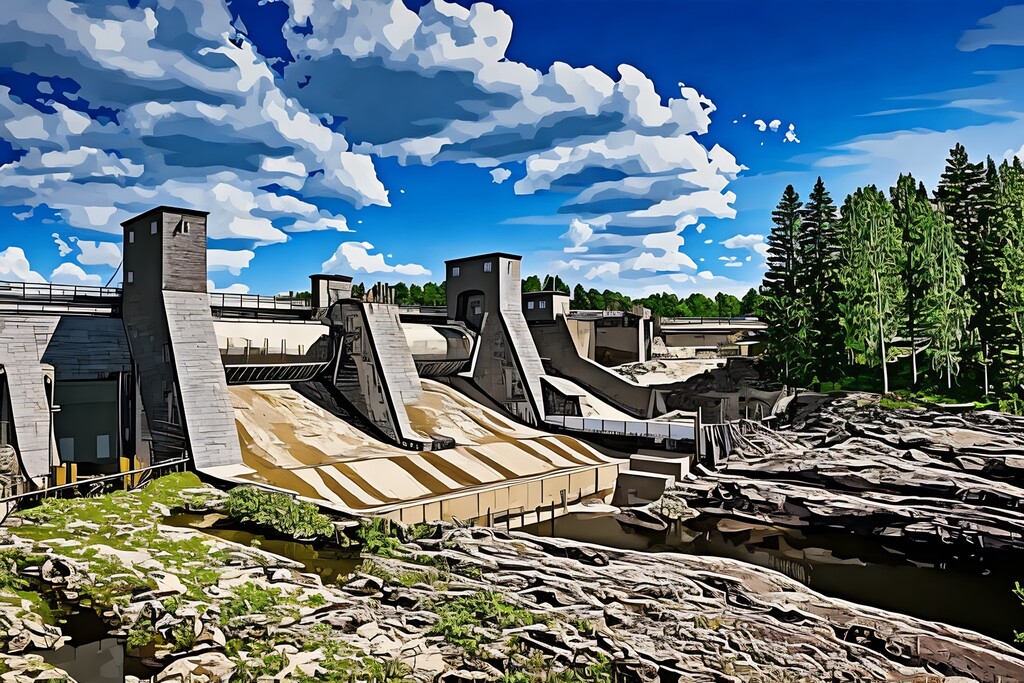The interconnection between water and energy, often referred to as the water-energy nexus, is becoming increasingly critical as climate change intensifies. This intricate relationship underscores the reliance of energy production on water, particularly for hydropower and cooling in thermal plants. However, as droughts become more frequent and severe, the availability of water for energy production is under threat, raising concerns about the reliability of the grid and the sustainability of power generation systems.
The Role of Water in Energy Production
Water is an essential component in energy generation. Approximately 90% of global electricity production is water-intensive, particularly for hydropower and thermal plants. Hydropower, which contributes around 15% of the world’s electricity, directly relies on the flow of rivers and the stability of water reservoirs. Meanwhile, thermal plants—whether nuclear, coal, or gas—require vast amounts of water for cooling. Freshwater availability is critical to their operations, making power generation vulnerable to droughts and heat waves.
Several regions have experienced the consequences of this vulnerability in recent years. For instance, in 2011, 2012, and again in 2018, parts of the United States faced power curtailments as thermal power plants were forced to shut down due to insufficient cooling water. Similar events occurred in Europe, with France, Germany, and Spain also witnessing significant power generation losses during droughts.
Impact of Droughts on Hydropower and Thermal Plants
Hydropower is particularly susceptible to shifts in precipitation patterns, as changing rainfall and the shrinking of snowpacks can severely affect water inflows. Lower water levels have reduced hydropower capacity in areas like the U.S. Southwest and Europe’s Alpine regions. This undermines the reliability of renewable energy sources and exacerbates reliance on fossil fuels, leading to increased carbon emissions during peak energy demands.
Thermal plants face a different but equally pressing challenge. Cooling processes for nuclear and fossil fuel plants require steady access to freshwater sources. During periods of extreme heat, rivers and lakes can experience higher temperatures and lower water levels, limiting the ability to cool these plants efficiently. In some cases, this forces plants to curtail output or shut down entirely, straining the electrical grid and driving up energy prices.
For example, France’s reliance on nuclear energy has made it particularly vulnerable to water shortages. In 2003, the country experienced a severe heatwave, which caused river temperatures to rise and water levels to drop, forcing several nuclear plants to reduce their operations. The resulting electricity shortages led to increased import costs, which exceeded €300 million.
Water Scarcity and Grid Reliability
The interdependence of water and energy risks grid reliability as water resources become increasingly scarce. As regions grapple with drought, power generation is threatened, which can lead to energy shortages. This issue is particularly critical in areas where water resources are already stretched, such as the Middle East and parts of the western United States.
For example, the ongoing drought along the Colorado River, which supplies water to millions of people across seven U.S. states, has raised alarms about its impact on hydropower generation at major dams like Hoover and Glen Canyon. Lake Mead’s water levels, the U.S.’s largest reservoir, have fallen to historic lows, putting hydropower production at risk.
Furthermore, the increasing need for desalination to provide fresh water in arid regions, such as the Middle East, exacerbates the water-energy nexus. Desalination is an energy-intensive process which increases electricity demand, creating a vicious cycle where water scarcity drives up energy consumption, further straining both resources.
Adapting to the Water-Energy Challenge
Addressing the challenges posed by the water-energy nexus requires immediate and long-term solutions. One approach is to increase the efficiency of water usage in energy production. For thermal plants, investing in advanced cooling technologies that require less water, such as dry cooling systems, can reduce their vulnerability to water scarcity. However, these systems are often more expensive and less efficient than traditional water-based cooling methods.
Another potential solution lies in diversifying the energy mix to include more renewable sources that do not rely heavily on water, such as wind and solar. Unlike hydropower and thermal plants, these technologies require little to no water for operation, making them more resilient to drought and heat waves. As the global energy transition progresses, increasing the share of wind and solar in the energy mix will be crucial to reducing the water footprint of power generation.
Moreover, better management of water resources is essential. Hydropower plants, for instance, can benefit from adaptive management strategies that consider changing water availability. This might involve modifying reservoir operations or employing more advanced forecasting tools to predict water flow and optimize energy production.
Conclusion
The water-energy nexus is a growing concern as climate change accelerates. Droughts, heatwaves, and shifting precipitation patterns are increasingly disrupting hydropower and thermal power generation, threatening grid reliability and raising energy costs. To mitigate these risks, the energy sector must adapt by investing in more efficient technologies, diversifying the energy mix, and improving water resource management.
As water scarcity becomes more acute, the interdependence between water and energy will require more concerted efforts from governments, industries, and communities to ensure a sustainable and resilient energy future. Addressing the water-energy nexus is about securing electricity for today’s needs and ensuring the long-term sustainability of both resources in a changing climate.

